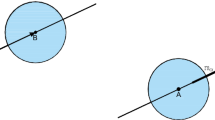Abstract
Buckling analysis of functionally graded (FG) nanobeams is examined using doublet mechanics theory. The material properties of FG nanobeams change with the thickness coordinate. A periodic nanostructure model is considered in FG nanobeams which has a simple crystal square lattice type and Euler–Bernoulli beam theory is used in the formulation. Softening or hardening material behaviour has been observed by changing chiral angle of the considered FG periodic nanobeams in the present doublet mechanics theory. Unlike other size dependent theories such as nonlocal stress gradient elasticity theory, couple stress theory, strain gradient theory, this mechanical response (softening or hardening) is seen for the first time in doublet mechanics theory. Mechanical material responses are directly affected by the atomic structure of the considered material in the doublet mechanics theory. Firstly, micro-stress and micro-strain relations are obtained for the considered nanostructure model in doublet mechanics theory. Then, these microequations are transformed to macroequations in the present doublet mechanics theory. Thus, more physical and accurate mechanical results can be obtained in nanostructures using the doublet mechanics theory. After developing the mathematical formulations of FG periodic nanobeams, Ritz method is applied to obtain the critical buckling loads for different boundary conditions. Comparison of example studies with the present doublet mechanics model is presented for verification, and effects of chiral angle on stability response of periodic FG nanobeams are discussed.



Similar content being viewed by others
References
Şimşek M, Yurtcu HH (2013) Analytical solutions for bending and buckling of functionally graded nanobeams based on the nonlocal Timoshenko beam theory. Compos Struct 97:378–386
Miyamoto Y, Kaysser WA, Rabin BH, Kawasaki A, Ford RG (1999) Functionally graded materials: design, processing and applications. Kluwer Academic Publihers, London
Sankar BV (2001) An elasticity solution for functionally graded beams. Compos Sci Technol 61:689–696
Chakraborty A, Gopalakrishnan S, Reddy JN (2003) A new beam finite element for the analysis of functionally graded materials. Int J Mech Sci 45:519–539
Wattanasakulpong N, Prusty BG, Kelly DW (2011) Thermal buckling and elastic vibration of third-order shear deformable functionally graded beams. Int J Mech Sci 53:734–743
Aydogdu M, Taskin V (2007) Free vibration analysis of functionally graded beams with simply supported edges. Mater Des 28:1651–1656
Li XF (2008) A unified approach for analysing static and dynamic behaviors of functionally graded Timoshenko and Euler-Bernoulli beams. J Sound Vib 318:1210–1229
Sina SA, Navazi HM, Haddadpour H (2009) An analytical method for free vibration analysis of functionally graded beams. Mater Des 30:741–747
Reddy JN (2011) Microstructure-dependent couple stress theories of functionally graded beams. J Mech Phys Solids 59:2382–2389
Nguyen TK, Nguyen BD, Vo TP, Thai HT (2017) Hygro-thermal effects on vibration and thermal buckling behaviours of functionally graded beams. Compos Struct 176:1050–1060
Arefi M, Zenkour AM (2017) Wave propagation analysis of a functionally graded magneto-electro-elastic nanobeam rest on Visco-Pasternak foundation. Mech Res Commun 79:51–62
Hasanyan DJ, Batra RC, Harutyunyan S (2008) Pull-in instabilities in functionally graded microthermoelectromechanical systems. J Therm Stress 31:1006–1021
Janghorban M, Zare A (2011) Free vibration analysis of functionally graded carbon nanotubes with variable thickness by differential quadrature method. Phys E 43:1602–1604
Eltaher MA, Emam SA, Mahmoud FF (2012) Free vibration analysis of functionally graded size-dependent nanobeams. Appl Math Comput 218:7406–7420
Şimşek M, Reddy JN (2013) A unified higher order beam theory for buckling of a functionally graded microbeam embedded in elastic medium using modified couple stress theory. Compos Struct 101:47–58
Ansari R, Gholami R, Sahmani S (2011) Free vibration analysis of size-dependent functionally graded microbeams based on the strain gradient Timoshenko beam theory. Compos Struct 94:221–228
Akgöz B, Civalek Ö (2013) Free vibration analysis of axially functionally graded tapered Bernoulii–Euler microbeams based on the modified couple stress theory. Compos Struct 98:314–322
Akgöz B, Civalek Ö (2013) Buckling analysis of functionally graded microbeams based on the strain gradient theory. Acta Mech 224:2185–2201
Abo-bakr HM, Abo-bakr RM, Mohamed SA, Eltaher MA (2021) Multi-objective shape optimization for axially functionally graded microbeams. Compos Struct 258:113370
Eltaher MA, Fouda N, El-midany T, Sadoun AM (2018) Modified porosity model in analysis of functionally graded porous nanobeams. J Braz Soc Mech Sci Eng 40:141
Esen I, Özarpa C, Eltaher MA (2021) Free vibration of a cracked FG microbeam embedded in an elastic matrix and exposed to magnetic field in a thermal environment. Compos Struct 261:113552
Abo-bakr RM, Abo-bakr HM, Mohamed SA, Eltaher MA (2021) Optimal weight for buckling of FG beam under variable axial load using Pareto optimality. Compos Struct 258:113193
Abo-bakr RM, Eltaher MA, Attia MA (2020) Pull-in and freestanding instability of actuated functionally graded nanobeams including surface and stiffening effects. Eng Comput. https://doi.org/10.1007/s00366-020-01146-0
Abo-bakr HM, Abo-bakr RM, Mohamed SA, Eltaher MA (2020) Weight optimization of axially functionally graded microbeams under buckling and vibration behaviors. Mech Based Design Struct Mach. https://doi.org/10.1080/15397734.2020.1838298
Eringen AC (1976) Nonlocal polar field models. Academic Press, New York
Mindlin RD (1964) Micro-structure in linear elasticity. Arch Ration Mech Anal 16:51–78
Cosserat E, Cosserat F (1909) Sur la théorie des corps déformables. Herman, Paris (In French)
Mohamed N, Eltaher MA, Mohamed SA, Seddek LF (2019) Energy equivalent model in analysis of postbuckling of imperfect carbon nanotubes resting on nonlinear elastic foundation. Struct Eng Mech 70(6):737–750
Eltaher MA, Mohamed N, Mohamed S, Seddek LF (2019) Postbuckling of curved carbon nanotubes using energy equivalent model. J Nano Res 57:136–157
Eltaher MA, Almalki TA, Ahmed KIE, Khalid H (2019) Characterization and behaviors of single walled carbon nanotube by equivalent-continuum mechanics approach. Adv Nano Res 7(1):39–49
Mohamed N, Mohamed SA, Eltaher MA (2020) Buckling and post-buckling behaviors of higher order carbon nanotubes using energy-equivalent model. Eng Comput. https://doi.org/10.1007/s00366-020-00976-2
Granik VT (1978) Microstructural mechanics of granular media. Technique report IM/MGU Inst Mech Moscow State Univ, pp 78–241
Eltaher MA, Mohamed N (2020) Nonlinear stability and vibration of imperfect CNTs by doublet mechanics. Appl Math Comput 382:125311
Eltaher MA, Mohamed N, Mohamed SA (2020) Nonlinear buckling and free vibration of curved CNTs by doublet mechanics. Smart Struct Syst 26(2):213–226
Ferrari M, Granik VT, Imam A (1997) Introduction to doublet mechanics, Advances in Doublet Mechanics. Springer, Berlin, Heidelberg, pp 1–26
Gul U, Aydogdu M, Gaygusuzoglu G (2017) Axial dynamics of a nanorod embedded in an elastic medium using doublet mechanics. Compos Struct 160:1268–1278
Gul U, Aydogdu M (2018) Structural modelling of nanorods and nanobeams using doublet mechanics theory. Int J Mech Mater Des 14:195–212
Gul U, Aydogdu M (2018) Noncoaxial vibration and buckling analysis of embedded double-walled carbon nanotubes by using doublet mechanics. Compos Part B 137:60–73
Gul U, Aydogdu M (2018) Vibration and buckling analysis of nanotubes (nanofibers) embedded in an elastic medium using Doublet Mechanics. J Eng Math 109:85–111
Reddy JN (2004) Mechanics of laminated composite plates and shells: theory and analysis. CRC Press, Boca Raton
Leissa AW (2005) The historical bases of the Rayleigh and Ritz methods. J Sound Vib 287(4–5):961–978
Funding
The author received no financial support for the research, authorship, and/or publication of this article.
Author information
Authors and Affiliations
Corresponding author
Ethics declarations
Conflict of interest
The authors declare that they have no conflict of interest.
Additional information
Technical Editor: Aurelio Araujo.
Publisher's Note
Springer Nature remains neutral with regard to jurisdictional claims in published maps and institutional affiliations.
Rights and permissions
About this article
Cite this article
Gul, U., Aydogdu, M. Buckling analysis of functionally graded beams with periodic nanostructures using doublet mechanics theory. J Braz. Soc. Mech. Sci. Eng. 43, 254 (2021). https://doi.org/10.1007/s40430-021-02972-z
Received:
Accepted:
Published:
DOI: https://doi.org/10.1007/s40430-021-02972-z




